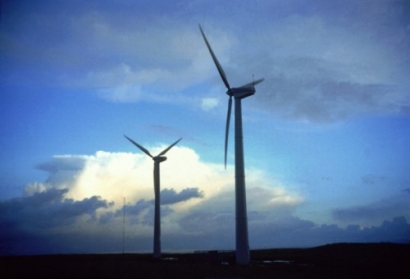“In 2017, the trend toward a viable U.S. offshore wind industry continued to gain momentum,” said Walt Musial, principal engineer in charge of offshore wind research at the U.S. Department of Energy’s National Renewable Energy Laboratory and a contributing author of the study. “While many factors impact the U.S. offshore wind market surge, state commitments to adopt offshore wind deployment targets and their favorable procurement policies have accelerated our nation’s offshore wind market activity, primarily along the Atlantic Coast.”
Progress continues in other countries as well. Globally, 3,387 MW of offshore wind capacity was commissioned in 2017, bringing the cumulative global installed capacity to more than 16.3 GW in December 2017. In northern Europe, offshore wind project auctions in 2017–2018 continued the trend of developers committing to lower electricity prices for projects commencing commercial operation in the 2020s—signaling rapidly dropping costs to install and operate projects.
Incorporating data on the global fleet of planned and operating projects at the end of 2017, the update also emphasizes recent U.S. developments through mid-2018.
Key Findings
- The U.S. offshore wind industry took a leap forward as several commercial-scale projects were selected for state-issued power purchase awards in 2018:
- The first round of offshore wind solicitations in Massachusetts was awarded to the 800-MW Vineyard Wind project.
- Rhode Island selected Deepwater Wind’s 400-MW Revolution Wind proposal to support the state’s goal of adding 1,000 MW of renewables by 2020.
- In Connecticut, an additional 200 MW of offshore wind capacity from Deepwater Wind’s Revolution Wind project was selected under the state’s clean energy request for proposals.
- Other U.S. states implemented dedicated energy procurement and offtake policies in 2017–2018:
- New York committed to 2,400 MW of offshore wind capacity by 2030.
- New Jersey increased its 2030 offshore wind commitment from 1,100 MW to 3,500 MW and directed the Board of Public Utilities to implement the state’s offshore renewable energy credit program.
- Four new offshore wind energy “call” areas were identified in the New York Bight off the south coast of Long Island by the U.S. Department of the Interior’s Bureau of Ocean Energy Management (BOEM). The Department of the Interior also plans to auction the two unleased portions of the Massachusetts wind energy area in 2018.
- Offshore wind industry developers are working with the U.S. Department of Defense, BOEM, and the states of California and Hawaii to ensure that future offshore wind developments are compatible with military operations and training.
- Globally, wind turbines continue to grow in capacity, hub height, and rotor diameter, leading to decreased overall project costs. Three manufacturers have announced the development of turbines rated greater than 10 MW and rotor diameters as large as 220 meters.
- Researchers in the United States and around the world are evaluating floating substructure configurations to allow the siting of offshore wind turbines in deeper water, where roughly 60 percent of U.S. offshore wind resource lies. Hywind Scotland, a five-turbine, 30-MW offshore wind farm that began producing electricity last year, is the first project in the world to use multiple commercial-scale wind turbines in a floating wind farm.
The new market update complements the 2016 Offshore Wind Technologies Market ReportPDF, which includes a more detailed discussion of key trends and statistics. With DOE’s support, NREL prepares these studies to provide industry stakeholders with quantitative information about the market, technology, and cost trends in the United States and worldwide.
Information provided by NREL


